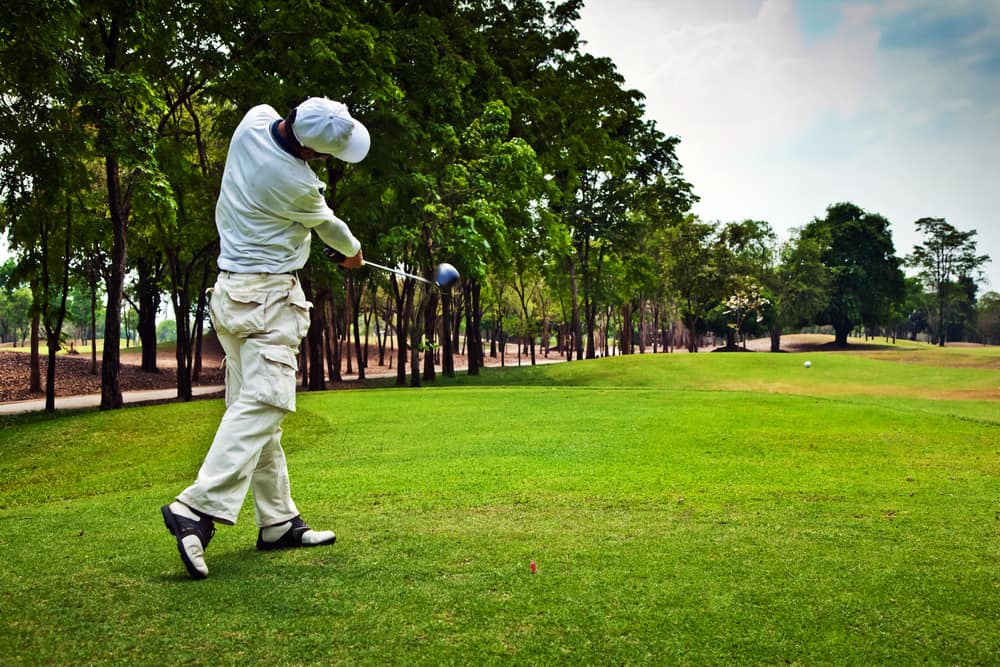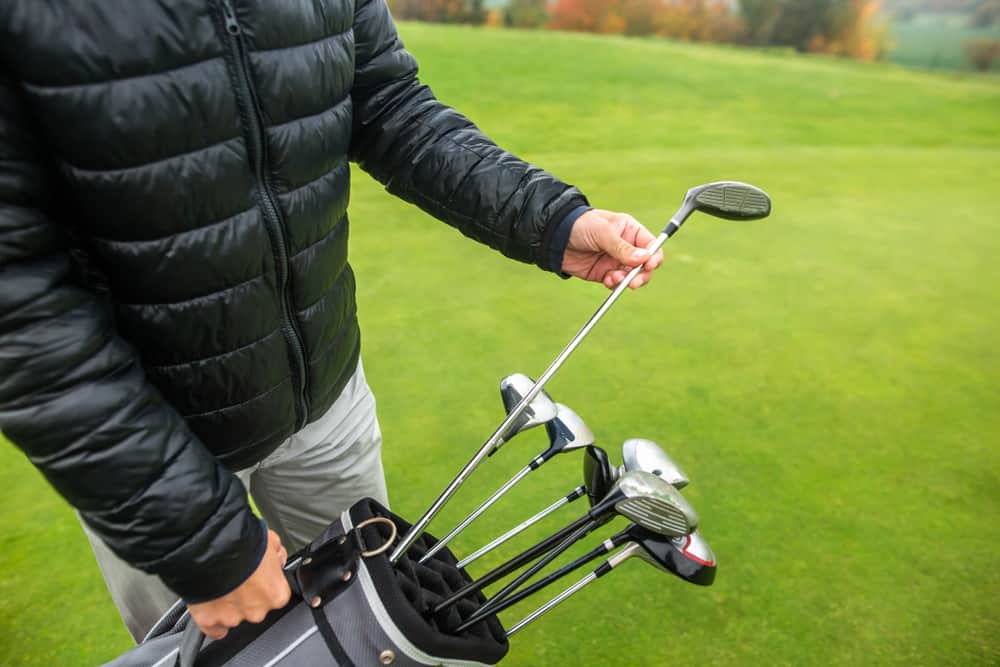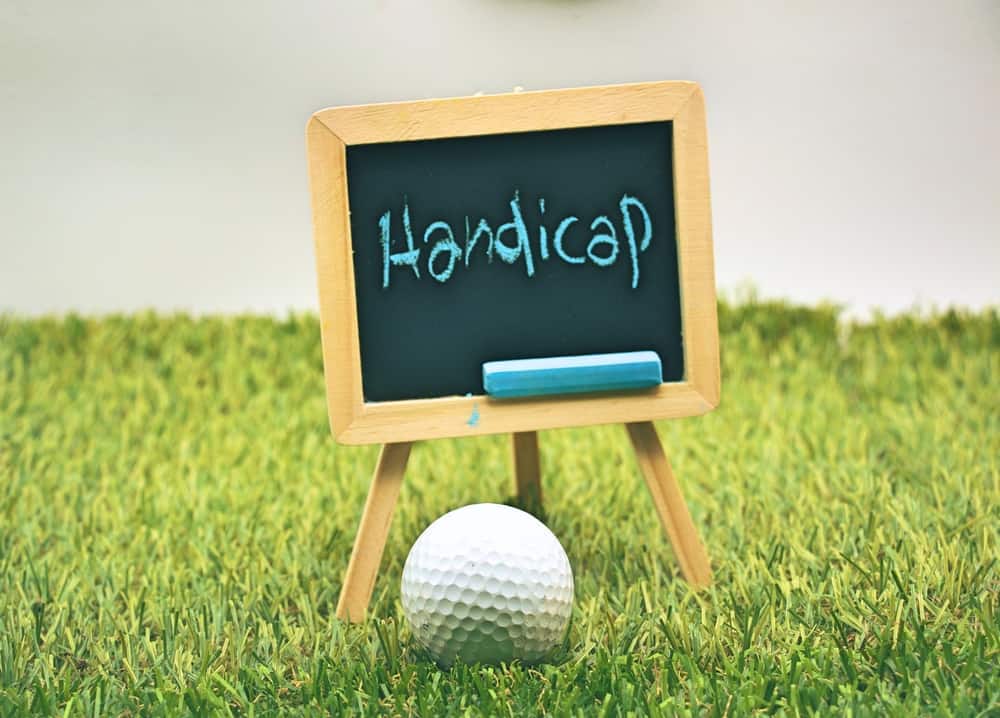
The more popular custom golf fitting gets, the more golfers are interested in measurements and statistics.
It is important to understand different statistics and how they impact your game.
When you know more about your golf swing and your golf game and what works for you, then you can choose the proper equipment.
In addition, having this understanding allows you to make appropriate changes to equipment should there be an issue with your game.
The measuring of swing weight is not hard to do, but you will need some tools.
Let’s take a look at everything you need to know to measure the swing weight of your golf clubs.
How To Measure Swing Weight (Everything To Know)

At first, you must ensure that you gather the proper supplies.
You are obviously going to need your golf clubs, but you will also need to get something like a swing weight scale or a pivot point.
Swing weight scales are rather self-explanatory and will give you an exact and apparent number of the swing weight of your club.
The pivot point takes a bit more calculation, so we are going to explain that process to you.
The pivot point is basically a triangular shaped gauge.
You can use these to help see exactly where the club balances and therefore figure out the swing weight.
In addition, you are going to need a typical scale that measures with very high accuracy.
Something like a postal scale would work so that you can get the proper and exact measurement of the weight of the club.
You have to remember that swing weight is a much different measurement than overall weight.
Therefore, the process of determining the swing weight is a bit more involved than what you may expect.
Step 1: Balance The Club
The first part of this process is to balance your golf club on the pivot point so that it is completely still and stable.
You will probably have to take a bit of time to get this to work exactly, but it is essential that the club is perfectly balanced for you to get the right measurements.
Once your club is balanced and resting, you can start to move to the next steps in the process.
Step 2: Break Out The Tape Measure
Now you will want to measure the distance between the balance point of the club and the grip end of the club.
This information needs to be recorded.
At this point, the unit of measurement for your recording should not make too much of a difference.
As long as you are writing everything down, this can all be converted and worked out later.
Step 3: Postal Scale
At this point, you are going to want to use a postal scale to get an actual weight on the club.
You can use a variety of scales as long as the accuracy is high.
For instance, your bathroom scale is not going to measure something this light to the same accuracy as a postal scale might do.
The measurement that you get is going to be in ounces for most scales, but you will need to get that number converted to grams.
The swing weight calculator uses grams in its measurement.
Step 4: Use The Swing Weight Calculator
The swing weight calculation is a bit complicated, and that is why we prefer to take the information we collected and put it into a calculator.
The swing weight calculator featured on Leaderboard.com is one of the best around, and it is quite easy to follow.
You should not need any other information than you collected in the process above.
Most golfers will have a general idea of what their swing weight is, so if you see a number that is way off, you will know that it is potentially a problem.
The swing weight calculator gives you a measurement that you will be able to use to decide if it is necessary to adjust your golf clubs in any way.
One thing that is confusing for some players is the fact that the swing weight is not the same as the total weight.
Try to get this idea out of your head so that you can find a better solution for your game by getting the proper statistics from your measurements.
What Is Swing Weight?

Now that you have a general idea as to how to measure swing weight, it is now essential to learn what exactly swing weight is and how it can help your game.
Swing weight goes beyond the weight of the club, and it is more about how heavy a golf club feels.
If your head feels heavy, the swing weight may be too high for your game.
Since the swing weight takes into consideration both the length and the balancing point of the club, it is different than just overall weight measurement.
Sometimes a player will cut their club down, and all of a sudden, the club feels heavier to them.
The cutting down of the club was likely intended to make the golf club a better length, but there are implications that can end up making it a more difficult fit for a player.
The swing weight scale is also something that is a bit different from a typical golf club weight scale.
The swing weight scale was invented in the 1920s, and it was created out of a need for players to be able to describe that a club felt heavier for them, but it was a good fit for another person.
This measurement takes into consideration a variety of factors, and therefore, the swing weight is an essential thing for people to be paying attention to when they are purchasing golf clubs.
Swing Weight Measurement—What Does It Mean?

When you complete your calculation and get your swing weight measurement, you will now wonder what you can do with this information.
The swing weight scale ranges from the letter A to the letter F.
Within each letter, there are ten values that go along with the letter.
This is why when you see a swing weight measurement, it will often be something like D2 or D4.
The lightest possible weight on the scale is A0, and the heaviest that you will ever see is F9.
For most players, golf clubs are going to be between C1 and D9.
Most standard men’s golf clubs are going to be right around D1.
For women’s golf clubs, the average will be about a C6.
This, of course, depends on the type of equipment you are playing with and who it is built for.
If you are playing with a player’s iron that is built for a stronger and faster swinging player, the swing weight could be a little higher.
For players who are slightly slower swinging and have a hard time getting the clubhead speed that they need, the clubs in the C range tend to be a better fit.
Some men’s senior golf clubs will start to move towards the C range.
For a golfer, there is really no way to tell if a club is a D1 or a D2 just by swinging it.
Some players may be able to tell a club is heavier or lighter, but the differences between them are so slim that it is nearly impossible to tell.
The difference from one swing weight to another is .07 ounces.
This is such a minute amount that you will have a very hard time seeing the difference.
How Do I Know What Swing Weight I Need?

Now the question becomes finding the proper swing weight for your game.
How will you know which swing weight is the best for you?
The truth is that you are going to have to figure this out through either trial and error or from a custom fitting.
The trial-and-error method can take a bit of time, but it is typically well worth the time that you put in.
Getting to swing with a club that feels right for you and then purchasing that club knowing that it is already a good solution is one of the best ways to get better at the game.
The custom fitting is the typical way that people are getting the information that they need about their golf game and what will work for them.
Custom fittings involve the use of a launch monitor.
The launch monitor can ensure that you will get very accurate results about the shafts and the club heads that you are using.
With the use of a launch monitor, golf club fitters can give you exact specifications of a club and shaft combo that will be the proper fit for your game.
These are going to help ensure that you only buy one set and don’t have to keep purchasing options that will be a better fit for your game.
If you are an average golfer, you can expect that a swing weight around D1 or D2 is going to be the smartest fit.
These clubs are standard, and they are going to be very easy for you to find as well.
Do All Of My Clubs Have The Same Swing Weight?

When it comes to golf fitting, we often took about the importance of consistency.
Your swing must be consistent if you are going to perform well.
This is why it’s essential to have consistency in your golf grips, your shafts, and even the clubhead in the majority of your clubs.
However, when it comes to swing weight, this consistency may not be a good thing.
A consistent swing weight throughout the golf set is not really possible or recommended.
Golfers should have wedges that are two to three weights higher than their irons.
This is because a wedge typically has to swing a bit more down and through the ball to get the proper results.
Wedges also have to go through things like sand and thick grass.
The heavier head can help them to travel through a bit easier and launch the ball out.
If your golf clubs are D1 and your wedges are D3, don’t let this bother you.
In fact, this setup is likely a better choice than something where the wedges are a bit too lightweight.
Even if the overall weight of your wedges is not that high, you should have the concept in mind that the wedge feels heavier.
After all, swing weight is more about feel than anything else.
Can I Use Lead Tape To Adjust Swing Weight?
One of the best ways to adjust the swing weight of your golf clubs is to use lead tape.
The lead tape can be put on the head of the club, and it will help to increase swing weight.
The increase is going to make it easier for you to feel the head of the club and get that extra weight that you need.
The lead tape can increase swing weight rather quickly.
You will only need a few pieces to make a major difference in the way the club feels.
Before you put a roll of lead tape on your clubs, make sure you consider whether or not this is the feel you want.
Practice with your clubs a bit and see what the difference is like when you are trying it.
Most likely, the adjustment will be a good one, but in case it isn’t, you can save yourself a lot of tape peeling.
Conclusion
Hopefully, you now feel as though you can measure the swing weight of your golf clubs without purchasing a swing weight scale.
Truly, the easiest way to get accurate measurements is to use the scale.
If you are a golfer who likes to tinker with clubs and make adjustments to the shafts and heads, it is smart to purchase a swing weight scale.
The ability to accurately measure this number will be essential.
When your swing weight is right, your clubs are just going to feel better.




Leave a Reply